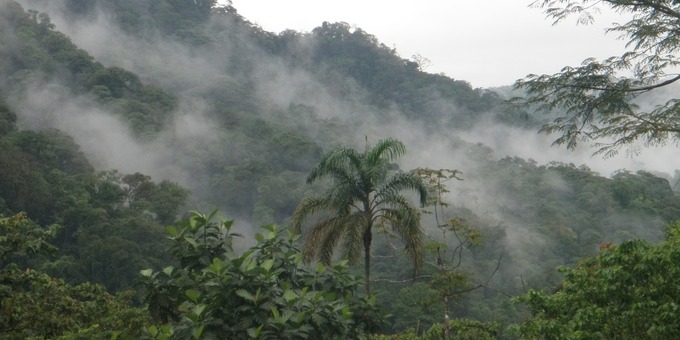
Nestled in the verdant hills of Costa Rica's Central Valley lies a hidden gem of biodiversity and natural beauty, Juan Castro Blanco National Park. This pristine wilderness, covering over 14,285 hectares (35,299 acres), is a testament to Costa Rica's commitment to conservation. Established in 1992, the park is named after a renowned Costa Rican naturalist, Juan Castro Blanco, who dedicated his life to the study and preservation of the country's rich ecosystems.

Geography and Location
Juan Castro Blanco National Park is situated in the Alajuela Province, approximately 50 miles (80 kilometers) north of the capital city, San Jose. It forms part of the rugged Cordillera Central mountain range, which stretches across the heart of Costa Rica. The park's elevation varies from 1,312 to 7,438 feet (400 to 579 meters) above sea level, offering a diverse range of ecosystems from lush cloud forests to subalpine paramo.
Flora and Fauna
One of the most remarkable features of this national park is its incredible biodiversity. Juan Castro Blanco is a sanctuary for a wide array of plant and animal species. Visitors are treated to a visual feast of vibrant orchids, towering trees, and an astonishing variety of ferns, mosses, and bromeliads. The park is also home to several species of endemic plants, making it a crucial area for conservation efforts.
As for wildlife, the park provides habitat for elusive and endangered species such as jaguars, ocelots, and tapirs. Birdwatchers will be delighted to spot resplendent quetzals, keel-billed toucans, and the emerald toucanet. The ethereal cloud forests resound with the calls of howler monkeys, and elusive pumas roam the higher altitudes.
Trails and Hiking
Juan Castro Blanco National Park offers a network of well-maintained trails that cater to both novice and experienced hikers. The park's trail system allows visitors to explore its diverse ecosystems, from dense forests to paramo landscapes. Notable trails include:
Camping and Accommodations
For those seeking a deeper connection with nature, Juan Castro Blanco National Park provides several designated camping areas. Camping permits can be obtained at the park's entrance, and visitors are encouraged to bring their own camping equipment, including tents and cooking supplies. Keep in mind that the park's high-altitude camping areas can get chilly, so warm clothing is essential.
Alternatively, nearby towns like Ciudad Quesada and Zarcero offer a range of accommodations, including hotels and cabins, for those who prefer a more comfortable stay.
Conservation and Sustainability
As part of Costa Rica's ongoing commitment to conservation, Juan Castro Blanco National Park plays a vital role in preserving the country's unique ecosystems. Park authorities and local communities work together to protect this natural treasure, ensuring that future generations can continue to explore its wonders.
Conclusion
Juan Castro Blanco National Park stands as a testament to Costa Rica's dedication to environmental preservation. Its stunning landscapes, diverse ecosystems, and abundant wildlife offer visitors a chance to reconnect with nature in its purest form. Whether you're a seasoned hiker, a birdwatching enthusiast, or simply seeking tranquility in the heart of the Central Valley, this national park promises an unforgettable experience amidst the splendors of Costa Rica's natural world.
There are no park facilities or entrance fees.
Located in the cloud forest, the weather is fairly predictable. Expect cool and damp conditions and dress for rain. Daytime temperatures average in the low 70s with night time lows averaging in the upper 50s. The most consistent rain is experienced between the months of May through November with the heaviest rains September through November.
Visitors should pack shorts, tee shirts, appropriate shoes, rain gear, sun block. It is also advised to bring at least one pair of pants, a long sleeve shirt, and even a sweat shirt or light jacket. Check the Costa Rican packing list for more ideas.
Fun Fact: Juan Castro Blanco National Park is home to numerous waterfalls due to the steep elevation and abundant rains.
| La Fortuna and Arenal Volcano | 61 km |
| Sarapiqui | 86 km |
| Alajuela | 80 km |
| San Jose | 97 km |
| Heredia-Poas | 90 km |
Latitude: N 10° 17' 12.12"
Longitude: W 84° 19' 49.44"
Unsure of what to do? Let us make you a free custom trip plan!